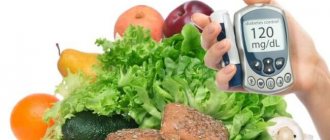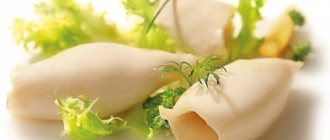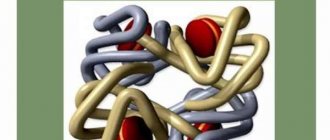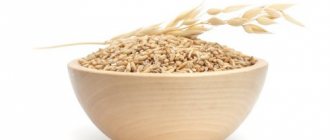Shrimp is a unique product from the point of view of nutritionists; it is high in protein and low in fat. What else do you need for those who want to have a healthy body and a beautiful figure? But the recent fame of shrimp as a seafood product that carries “death under its shell”, due to its high cholesterol content. This made gourmet lovers think about the correctness of their culinary preferences. Shrimp and cholesterol, will gourmets who care about their health really have to give up such a tasty seafood gift?
The benefits of shrimp for the body
The amount of micronutrients (nutrients, including vitamins) in shrimp meat is 5 times higher than in pork. This is the main benefit of this seafood. Shrimp contain (per 100 grams of meat):
- calcium (53 mg);
- phosphorus (204 mg);
- magnesium (37 mg);
- iron (2.5 mg);
- selenium (38 mcg);
- zinc (1.2 mg);
- vitamin A (0.06 mg);
- vitamin D (3.9 mg);
- B vitamins (0.4 mg);
- polyunsaturated fatty acids (omega-3 and omega-6, 570 mg in total).
At the same time, shrimp meat is considered a dietary product, since it contains only 1.8 grams of fat per 100 grams. It can also be used when prescribing a gentle diet.
Composition and properties
Shrimp combines beneficial properties and exquisite taste. It has almost no fat and calories. This product is recommended for both pregnant women and children. It is included in diets for diabetes and obesity. The appearance of shrimp is deceiving; large and beautiful warm-water crustaceans are less useful than their small cold-water relatives. Shrimp contains about 50 times more microelements than beef.
In order not to get confused about the beneficial properties and understand the effect of microelements on the body, you can study the presented table, which includes not all, but only the most useful substances contained in shrimp.
| Substance in shrimp | Benefits for the body |
| Minerals | |
| Kalium (K) | Included in the mechanism of the sodium-potassium pump. Normalizes water and acid-base balances. Creates conditions for muscle contractions. |
| Calcium (Ca) | Regulates intracellular processes. Participates in the secretion of hormones and the work of neurotransmitters. Improves blood clotting. Strengthens the skeleton and teeth. |
| Phosphorus (P) | Part of the enamel of teeth. Prevents bone diseases. |
| Chromium (Cr) | Reduces cholesterol levels. |
| Zincum (Zn) | Promotes the removal of carbon dioxide. Needed for the formation of sperm and testosterone. Important for normalizing prostate function. Helps synthesize insulin, testosterone and growth hormone. Breaks down alcohol. |
| Sulfur (S) | Included in amino acids, vitamins, enzymes. |
| Manganum (Mn) | Affects growth, blood formation and gonadal function. |
| Ferrum (Fe) | Prevention of anemia. Participates in the transport of oxygen. |
| Cuprum (Cu) | Required for the conversion of Fe into hemoglobin. Participates in the growth process. Takes part in the formation of collagen and elastin and the synthesis of endorphins. |
| Cobaltum (Co) | Takes part in the synthesis of DNA and amino acids. Stimulates the growth and development of red blood cells. Regulates the activity of adrenaline. Participates in metabolism. |
| Molybdenum (Mo) | Prevention of impotence. Prevents the occurrence of gout. Increases blood hemoglobin level. |
| Vitamins | |
| Tocopherol (E) | Immunomodulator. Neuroprotector. Antioxidant. Affects protein synthesis. Protects cells from toxic and radioactive effects. Prevents cancer. Relieves stress. |
| Vitamin A | The main component of visual pigment. Stimulates growth and development. Structural component of cell membranes. Antioxidant. Improves vision and skin condition. Moisturizes the cornea. Strengthens immune function. |
| Folic acid (B9) | Prevention of megaloblastic anemia. Promotes proper formation of the fetus. Normalizes sperm production. |
| Cyanocobalamin (B12) | Reduces cholesterol. Activates metabolism. Helps restore liver function. Strengthens the nervous system. Increases the ability of tissues to regenerate. |
| Ascorbic acid (C) | Converts cholesterol into bile acids. Prevention of scurvy and premature aging. Immunomodulator. Neuroprotector. |
| Nicotinic acid (PP) | Participates in the synthesis of enzymes. Medicine. |
| Cholecalciferol (D) | Provides absorption of Ca and P. Improves the development of bones and teeth. Increases blood clotting. Reduces the risk of diabetes. Strengthens the immune system. |
| Other substances | |
| Astaxanthin | Antioxidant. Stabilizes hormonal levels. Strengthens the immune system. Renews and regenerates tissues. |
See also:
New research on chicken and quail eggs: do they raise cholesterol?
How much cholesterol is in shrimp?
The cholesterol content in shrimp is from 135 to 195 mg per 100 grams of product (depending on the variety and region of residence). However, about 70% of it is high-density lipoprotein, which is commonly called “good” cholesterol. HDL promotes the removal of fractions deposited on the walls of blood vessels; their higher concentration reduces total cholesterol levels over time. The rest is low density lipoproteins. Therefore, there are still more benefits from shrimp than harm.
Since shrimp have a fairly high protein content (about 22 g per 100 g), this promotes good absorption of high-density cholesterol, that is, its bioavailability increases. This also reduces the load on the liver (which synthesizes most of the high-density lipoproteins a person needs).
Bad and good cholesterol
These names are rather arbitrary, since low-density lipoproteins containing bad cholesterol have their own functions and beneficial properties. True, LDL benefits only when they are within normal limits (for example, they support the functioning of the immune system), but if there is too much “bad” cholesterol, then it poses a danger to the cardiovascular system. High-density lipoproteins, which contain “good” cholesterol, on the contrary, prevent heart and vascular diseases.
Threat to blood vessels. The dangers of high cholesterol Read more
Is it possible to eat shrimp if you have high cholesterol?
If you have high cholesterol, you can eat shrimp, and in significant quantities. This is explained by their high content of omega-3 polyunsaturated fatty acids, which dramatically reduce the concentration of LDL in the blood, and also indirectly reduce the likelihood of the formation of cholesterol plaques on the inner walls of blood vessels.
Where else is the maximum amount of omega-3 found?
Cardiologists and nutritionists say that daily consumption of about 200–300 mg of omega-3 reduces the likelihood of developing atherosclerosis by 7 times.
In shrimp, this microelement ranges from 200 to 540 mg per 100 grams. Moreover, the body is able to accumulate and use unsaturated fatty acids “on demand”.
That is why you can eat quite a lot of shrimp at a time, up to several hundred grams - all this will still benefit the body.
What to exclude
If you have high cholesterol, you will have to give up fatty meats, pork, lard, butter - these are all foods that contain large amounts of cholesterol, especially “bad” cholesterol. It is generally recommended to limit your consumption of egg yolks to 2-3 per week.
But in addition to high-fat meat products, you will have to pay attention to others, which will also have to be excluded.
Why is low cholesterol dangerous? More details
Proper preparation and consumption
During heat treatment, any meat loses most of its beneficial properties, since in this case a whole range of essential amino acids is destroyed. All this also applies to shrimp. According to nutritionists, they should be prepared with minimal culinary processing. It is recommended to give preference to boiling, steaming, and marinating (in diluted lemon juice).
If the shrimp were purchased frozen, then they should be defrosted only naturally, without using hot water or a microwave. After cooking, they can be stored for no more than 6 hours (including in the refrigerator), so it is better to cook as much as will be eaten at one time.
The simplest option is cooking. This is done as follows:
- Boil water, add salt to taste.
- For spices, it is better to add dried basil, bay leaf, and turmeric.
- Cook the shrimp over maximum heat for only 1.5 - 2.5 minutes (2.5 - 4 minutes for tiger shrimp, which are 2 - 4 times larger than usual).
- After cooling, remove the shells in any convenient way.
It is better to use as an addition to a salad or with cheese (we have already written about which one). But combining it with alcohol is not the best idea (although there are also exceptions). It is not recommended to fry shrimp in batter (egg with flour) - the nutritional value of such a dish is several times lower, the content of unwanted fats is higher, and the load on the gastrointestinal tract is significant.
Daily norm
Despite the harmlessness of even large quantities of seafood, the daily intake recommended by nutritionists is about 70–80 grams. You should eat no more than 380 grams of meat per week. It is important to maintain a varied diet so as not to provoke an excess of certain groups of micronutrients in the body (in particular, selenium, phosphorus, calcium - they indirectly reduce the level of hemoglobin in the blood).
During pregnancy, the daily intake is allowed to increase to 120 grams - during this period, the need for lipids, omega-3 acids, and B vitamins (including folic acid) increases by approximately 30 - 45%. In more detail, it is recommended to consult with the gynecologist with whom the woman is registered.
But children, especially those aged 3–4 years, should not be given more than 30–40 grams per day. If you eat more, there may be an excess of vitamin A in the body, which has a toxic effect on the liver and kidneys, and also slows down the division of nerve cells and causes inflammation of the cornea.
How to cook and eat
The valuable properties of sea crustaceans are indispensable in dietary and therapeutic nutrition. Therefore, it is very important to choose the right method of preparing dishes from them. The easiest way to preserve vitamins and minerals without losing beneficial qualities is by cooking. It only takes 3 minutes for complete readiness, after which you can use it as an independent dish or add it to salads, risotto, and pasta. Without harm to health, people who control cholesterol levels can eat up to 500 g of shrimp meat per week in small portions.
Warning. A popular dish: shrimp fried in a batter made from eggs and flour will increase not only the calorie content of the product, but also the level of bad cholesterol, negating all the advantages of the delicacy.
Possible harm and contraindications
There are only a few contraindications for use:
- allergic reaction (caused by hypersensitivity to certain groups of essential proteins);
- age up to 3 years.
You should also refrain from using it if you have symptoms of toxicosis (nausea, vomiting, fever).
As for possible harm, shrimp can carry many types of parasites. At the same time, radioactive elements and even mercury can be found in their composition - the level of these substances in the seas and oceans is constantly growing, which directly affects the composition of shrimp meat. Unfortunately, GOST standards do not yet provide for monitoring the presence of heavy metals in seafood, so you have to rely only on the conscience of suppliers and sellers.
Shrimp grown in artificial reservoirs can also be harmful. In almost 98% of cases, an antibiotic is added to the water in which they are constantly located - this helps slow down the growth of algae, as well as prevent the spread of various types of bacteria. Again, the state does not control which drugs manufacturers use. Therefore, you should give preference only to trusted suppliers.
Contraindications for use
A moderate serving of properly cooked shrimp won't hurt anyone. In order to get the maximum benefit from sea delicacies, you must follow the following rules:
- Do not consume simultaneously with bread, pasta, meat, mushrooms, alcohol, i.e. with foods containing protein;
- purchase a quality product, preferably from a well-known manufacturer;
- do not give to children under 3 years of age, to avoid an allergic reaction (in severe cases, up to anaphylactic shock);
- buy crustaceans grown in natural, wild conditions.
We select quality seafood
Shrimp belong to the category of perishable seafood, so you should buy them either live (found in stores in cities located near the place of catch) or frozen, nothing else.
This is what quality frozen shrimp looks like.
You should refuse to purchase them if you have:
- yellow or brown stains on the shell;
- excessively dry shell;
- black spots on the shell (indicates that the seafood has been frozen for quite some time);
- a straight, not curled, tail;
- sticking ice (this indicates that this is not the first time freezing has been done).
Fresh shrimp have a uniform pink color (with light splashes), as well as a tightly curved tail. A brown or green head on a shrimp is normal and occurs in some species. Tiger crayfish are generally more similar to ordinary crayfish, but with a lighter and striped shell (which is why they got their name).
In total, shrimp actually contain cholesterol, and in large quantities. But there is more benefit from it than harm, since it is predominantly unsaturated omega-3 fatty acids, which prevent the formation of plaques on the inner walls of blood vessels. The main thing is to eat only high-quality and fresh seafood.
Bakery
A product rich in sugar and carbohydrates? Yes, but nevertheless it is recommended to refrain from baking, especially those sold in stores.
Firstly, the buns contain butter or margarine, as well as eggs. These are the foods that are recommended to be limited. Secondly, store-bought baked goods often use refined vegetable oils, margarines, as well as homogenized oils and trans fats. Palm oil can also be used. Trans fats and refined vegetable oils increase cholesterol levels in the blood and contribute to increased vascular problems. These are sources of “bad” cholesterol and cholesterol plaques.
Cod liver
The product is truly very healthy, rich in essential fatty acids, and one of the best sources of vitamin D. It is recommended to eat cod liver to strengthen the immune system. But with all these benefits, this healthy product is quite high in cholesterol, so for those who have problems with this fat-soluble substance, cod liver will have to be abandoned.
How can you determine if your blood cholesterol is high? More details











